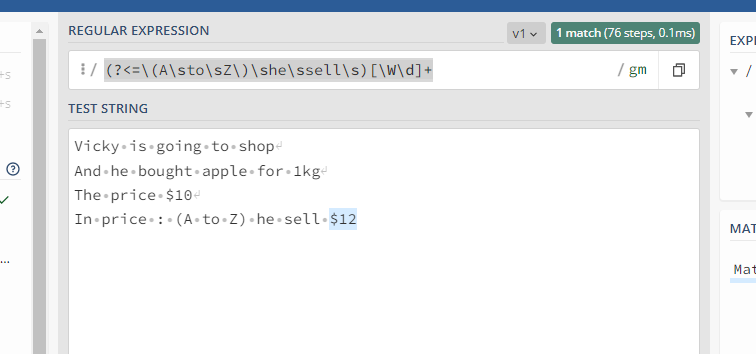

var regexInsensitive = /abc/i console.log(regexInsensitive.test('Abc')) // returns true, because the case of string characters don't matter // in case-insensitive search. Regular Expression Literal - Syntax /pattern/flags var regexGlobal = /abc/g console.log(regexGlobal.test('abc abc')) // it will match all the occurence of 'abc', so it won't return // after first match. Note that their order doesn’t have any effect on the result. You can also combine the flags in a single regular expression.
JAVASCRIPT REGEX TEST FULL
Now, let’s tap into the full power of regular expressions when handling more complex cases.įor example, instead of matching a specific email address let’s say we’d like to match a number of email addresses. Up until now we’ve created simple regular expression patterns. For example: var regex = /hello/ console.log(regex.test('hello world')) // true Special Characters It is the most basic pattern, which simply matches the literal text with the test string. We are going to use the test() method in this article. input: -> Is the actual string passed. index: -> Is where the regular expression starts. It accepts a string that we have to test against a regular expression.įor example: var regex = /hello/ var str = 'hello world' var result = regex.exec(str) console.log(result) // returns // 'hello' -> is the matched pattern. This method returns an array containing all the matched groups. It accepts a string which we have to test against regular expression and returns true or false depending upon if the match is found or not.įor example: var regex = /hello/ var str = 'hello world' var result = regex.test(str) console.log(result) // returns true () This method is used to test whether a match has been found or not. There are mainly two methods for testing regular expressions. Since forward slashes are used to enclose patterns in the above example, you have to escape the forward slash ( / ) with a backslash ( \ ) if you want to use it as a part of the regex.


Both regex objects will have same methods and properties attached to them. No matter which method you choose, the result is going to be a regex object. There might also be cases where you want to create regular expressions dynamically, in which case regex literal won’t work, so you have to use a regular expression constructor. Here the flags are optional, I will explain these later in this article.Regular Expression Constructor:Įxample: var regexConst = new RegExp('abc') Regular Expression Literal: It can be either created with RegExp constructor, or by using forward slashes ( / ) to enclose the pattern. There are two ways to create a regular expression in Javascript.
JAVASCRIPT REGEX TEST PASSWORD
Regular expressions allow you to check a string of characters like an e-mail address or password for patterns, to see so if they match the pattern defined by that regular expression and produce actionable information. They form a small language of its own, which is a part of many programming languages like Javascript, Perl, Python, Php, and Java. Regular expressions are a way to describe patterns in a string data.


 0 kommentar(er)
0 kommentar(er)
